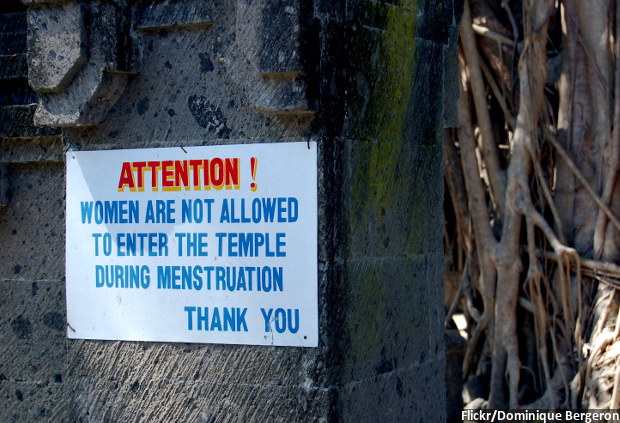Shame, Taboo Resulting In Unhygienic Menstrual Practices Across Much of India
Only in seven of India’s 36 states/union territories did 90% or more women in the 15-24 age group use hygienic protection during menstruation, according to the latest national health data.
Not even 50% women used clean methods of dealing with menstrual hygiene in eight states/union territories. The mean for these eight states was 43.5%, with Bihar the worst at 31%, according to the National Family Health Survey-4 (NFHS), released in 2015-16.
In seven states -- Andaman & Nicobar Islands, Chandigarh, NCT Delhi, Kerala, Mizoram, Puducherry and Tamil Nadu -- 92% of the female population, on average, used hygienic methods of menstrual protection. Lakshadweep topped the list at 97.1%.
Menstruation is still a taboo subject in India. Even now, women are considered “impure” during their period, subjected to social, religious and cultural restrictions, according to a study on menstrual health management. It was conducted by a collective of organisations dealing with water, sanitation and hygiene.
These practices have resulted in a culture of silence around the subject of period hygiene -- 70% of Indian mothers consider menstruation “dirty”, as per the findings of the study.
This shame around menstruation also forces girls to opt out of school once they reach puberty, impeding the growth of female literacy in India. In rural India, 23% of girls have listed menstruation as the chief reason for dropping out of school. As many as 28% of them said they do not go to school during their period because they lack clean and affordable protection, according to figures collated by Rutgers, an organisation for sexual and reproductive health and rights.
Urban India fares better, rural Madhya Pradesh the worst
In the urban areas of 11 states or union territories, more than 90% of women used hygienic period protection, according to NFHS-4.
Bihar (55.6%), Dadra Nagar Haveli (66.4%), Madhya Pradesh (65.4%), Tripura (56.5%) and Uttar Pradesh (68.6%) are exceptions to the rule that more than 70% urban women in India maintain period hygiene.
The numbers are poor for villages, with ten states/union territories reporting an average of 39%. Madhya Pradesh fares the worst at 26.4%.
Only two union territories -- Lakshadweep (98.4%) and Puducherry (97.8%) – showed a high number of rural women observing clean period protection.
Only 55% girls believe that periods are normal
There is very little awareness about the facts of menstruation among young girls in India. Only 55% of them consider it a natural and normal physical process, according to the study conducted jointly by Water Aid, PATH, Zariya, Development Solutions and Water Supply and Sanitation Collaborative Council.
Only 48% girls were aware of menstruation before they attained puberty, and no more than 23% knew that the uterus is the source of the bleeding, according to research conducted by the menstrual hygiene management study.
Teachers and health workers are not common sources of information for young girls on the subject of menstruation; mothers are, for 54%, according to the collective study.
Sanitary pads are too expensive, unavailable
The Rutgers study revealed that for the absorption of the menstrual blood, 89% women used cloth, 2% used cotton wool, 7% sanitary pads and 2% ash. Among those who used cloth, 60% changed it only once a day. These practices could explain why 14% girls reported menstrual infections.
Sanitary pads are either too expensive or unavailable for women in many parts of India.
(Rao is an intern with IndiaSpend.)
We welcome feedback. Please write to respond@indiaspend.org. We reserve the right to edit responses for language and grammar.
__________________________________________________________________
“Liked this story? Indiaspend.org is a non-profit, and we depend on readers like you to drive our public-interest journalism efforts. Donate Rs 500; Rs 1,000, Rs 2,000.”



